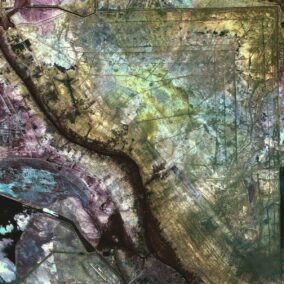GIS Evolution in Business: Revolutionizing Geographic Information Systems (GIS) for Business Excellence
In the dynamic landscape of business, strategic decisions hinge on the ability to harness data effectively. Geographic Information Systems (GIS) have been at the forefront of this revolution, evolving from the era of mainframe computers to the desktop software era in the ’90s. Understanding this evolution is crucial for business executives, mid-level managers, and entrepreneurs seeking to leverage GIS for informed decision-making.
The Mainframe Era: GIS on a Time Lag
Picture this: mainframe computers processing GIS data, delivering one map every five to 10 hours. The pace was slow, and errors were costly, consuming even more time for corrections. The mainframe era of GIS marked the initial steps towards spatial analysis, albeit at a painstakingly slow pace. Businesses grappled with the challenge of aligning GIS capabilities with their operational needs.
GIS Migration to Desktop Software: Empowering Real-Time Insights
The early ’90s brought a paradigm shift as businesses started adopting personal computers (PCs), paving the way for GIS migration to desktop software. This transition was monumental, offering organizations the ability to access GIS functionalities in real-time. The significance cannot be overstated – businesses could now analyze and visualize spatial data faster and more efficiently than ever before.
Unlocking the Power of Desktop GIS
Desktop GIS brought forth a plethora of possibilities. Businesses could now conduct spatial analysis, create custom maps, and derive insights at the click of a button. The evolution of GIS into desktop software meant that decision-makers could make informed choices swiftly, optimizing processes and resource allocation. The era of waiting for hours for a single map was replaced by the agility of desktop GIS.
GIS Today: Beyond Desktops and into the Cloud
Fast forward to the present, and GIS has transcended the confines of desktops. Cloud-based GIS solutions have emerged, offering scalability, flexibility, and accessibility. Business executives now have the power to harness GIS capabilities from anywhere, breaking down geographical barriers and facilitating collaborative decision-making. The advent of the cloud era in GIS aligns seamlessly with the demands of modern businesses.
Strategic Integration of GIS in Business
Today, GIS is not merely a tool; it’s an integral part of strategic business initiatives. From site selection and supply chain optimization to market analysis and risk assessment, GIS plays a pivotal role. Business success stories increasingly feature GIS as a driving force behind informed decision-making, enabling organizations to stay ahead in competitive markets.
The Role of GIS in Change Management and Effective Communication
Change management within organizations requires a comprehensive understanding of the evolving business landscape. GIS facilitates this by providing visual representations of data, making it easier for teams to grasp the impact of changes. Effective communication is bolstered through the use of GIS-generated maps and reports, ensuring that everyone is on the same page when it comes to strategic shifts.
Executive Coaching for GIS Implementation
Adopting GIS involves a learning curve, and executive coaching services play a vital role in guiding leaders through this process. Executives, mid-level managers, and entrepreneurs benefit from coaching that aligns GIS strategies with overall business goals, ensuring a seamless integration that enhances decision-making processes.
Looking Ahead: GIS, AI, and Business Synergy
The future of GIS lies in collaboration with emerging technologies like Generative Artificial Intelligence (GAI). Integrating GAI with GIS unlocks predictive analytics capabilities, allowing businesses to anticipate trends, mitigate risks, and seize opportunities. The synergy between GIS and GAI positions businesses at the forefront of innovation.
Conclusion: Navigating Business Landscapes with GIS
The evolution of GIS from mainframe computers to cloud-based solutions mirrors the journey of businesses adapting to the changing tides of technology. As we look ahead, GIS remains a cornerstone for businesses seeking not just to navigate but to thrive in dynamic landscapes. Embracing GIS means embracing a powerful tool for business success.
#GeospatialRevolution #GISIntegration #BusinessDecisionMaking























